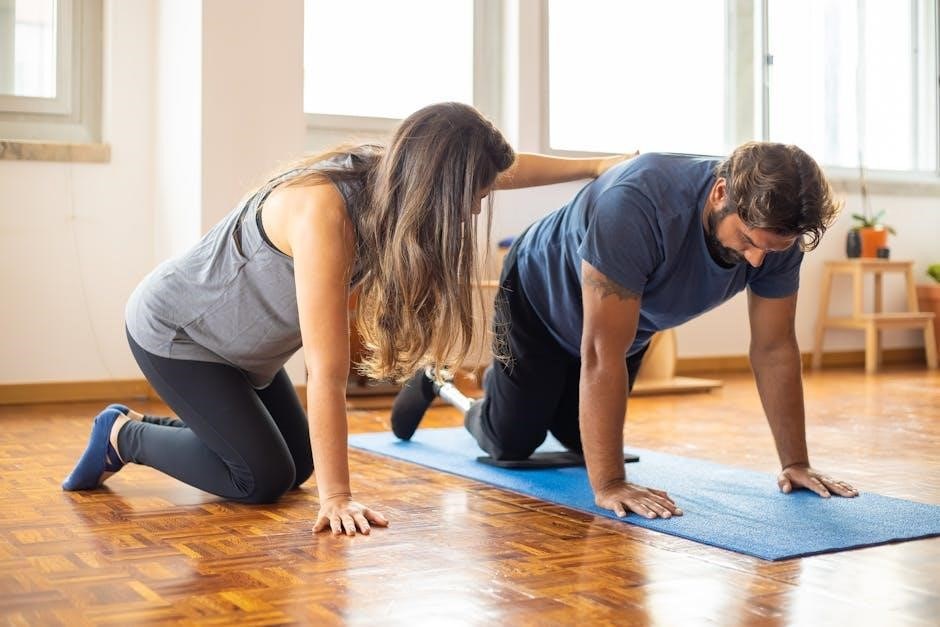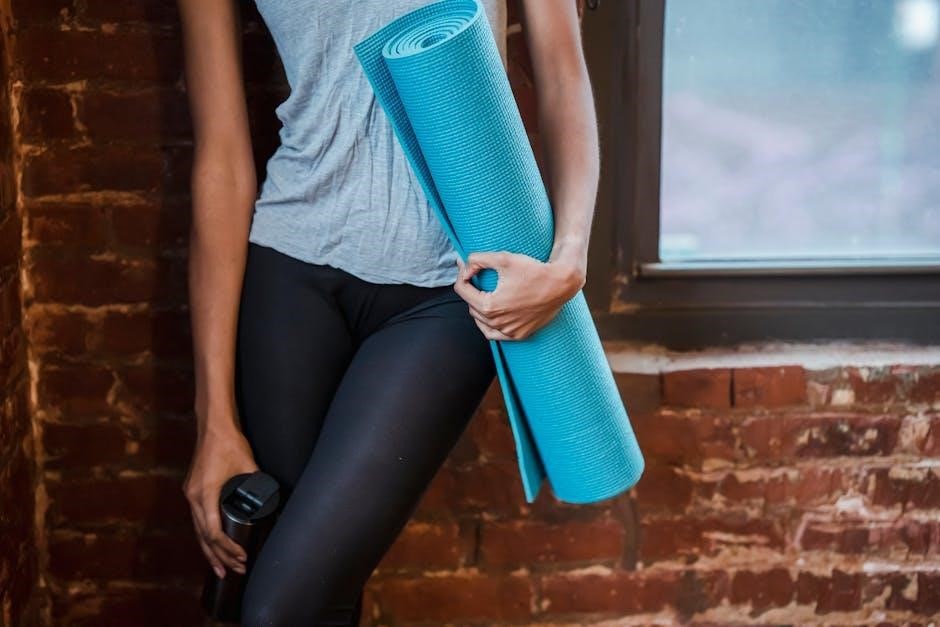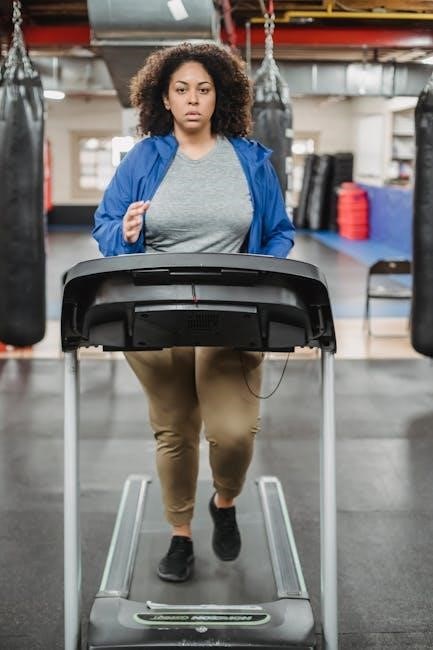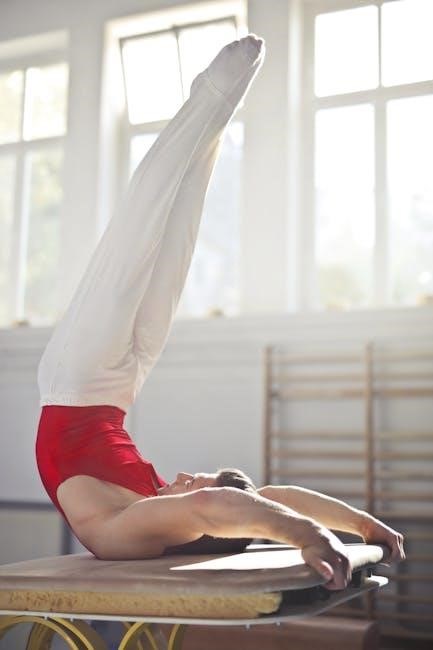full body workout without equipment pdf
Benefits of a Full Body Workout Without Equipment
A full body workout without equipment offers convenience, cost-effectiveness, and improved overall fitness. It’s efficient, targeting all major muscle groups, perfect for those with limited time or space.
Convenience and Accessibility
A full body workout without equipment is incredibly convenient, requiring no gym membership or special gear. It can be done anywhere, from home to a hotel room, making it perfect for busy schedules or travelers. This accessibility ensures consistency, allowing you to stay fit no matter your location or circumstances.
Cost-Effectiveness
A full body workout without equipment is highly cost-effective, eliminating the need for gym memberships or expensive gear. This approach saves money while providing an effective way to build strength and fitness. It’s a budget-friendly solution for anyone looking to stay in shape without financial strain, making it accessible to everyone.
Improved Overall Fitness
Engaging in a full body workout without equipment enhances cardiovascular health, boosts strength, and increases flexibility. By targeting all major muscle groups, it improves coordination and balance, leading to overall physical well-being. This holistic approach ensures comprehensive fitness without the need for specialized gear, making it ideal for a balanced lifestyle.
Structuring a Full Body Workout Routine
A well-structured full body workout without equipment typically involves 3-4 sessions weekly, each lasting 30-45 minutes. It combines upper, lower, and core exercises in a balanced routine for optimal results.
Upper Body Exercises
Upper body exercises in a no-equipment workout include push-ups, planks, tricep dips (using a chair), and Superman extensions. These movements target the chest, shoulders, triceps, and back muscles effectively without requiring any gear, making them ideal for home routines. They enhance strength, stability, and overall upper body definition.
Lower Body Exercises
Lower body exercises in a no-equipment workout include squats, lunges, glute bridges, calf raises, and wall sits. These movements target the quadriceps, hamstrings, glutes, and calves, enhancing strength, balance, and muscle tone. Variations like side lunges and single-leg squats add complexity, promoting functional fitness without the need for any equipment.
Core Strengthening Exercises
Core exercises like planks, side planks, and Russian twists target the abs, obliques, and lower back. These moves improve posture, stability, and overall core strength. Variations such as leg raises and bicycle crunches add intensity, while bird dogs and Superman poses enhance balance and muscle endurance, all without requiring any equipment.
Key Exercises for a No-Equipment Workout
Bodyweight squats, push-ups, planks, and lunges are essential. These exercises target multiple muscle groups, improving strength, endurance, and flexibility without needing any equipment, making them versatile for any setting.
Bodyweight Squats
Bodyweight squats are an effective exercise for strengthening the legs and glutes. They target multiple muscle groups, improving balance and flexibility. Perform by standing tall, then lowering your body until your thighs are parallel to the ground. This exercise is convenient, requiring no equipment, and can be modified with variations like sumo or pistol squats for added challenge.
Push-Ups
Push-ups are a cornerstone of full-body workouts, targeting the chest, shoulders, and triceps while engaging the core for stability. They require no equipment and can be modified to suit fitness levels, from knee push-ups for beginners to wide or diamond push-ups for added challenge. Proper form ensures maximum effectiveness and injury prevention.
Planks
Planks are essential for core strength, engaging the abdominals, obliques, and lower back muscles. They improve posture, balance, and overall stability. With variations like forearm planks and side planks, they suit all fitness levels. Holding a plank for 30-60 seconds builds endurance and strengthens the entire core without any equipment needed.
Lunges
Lunges are a versatile exercise targeting the legs, glutes, and core. They improve balance, strength, and functional movement. Perform walking lunges or stationary lunges to engage multiple muscle groups. Lunges enhance lower body power and coordination without needing equipment, making them a great addition to any full body workout routine.

Progression Strategies
Progression strategies include increasing repetitions, decreasing rest time, and incorporating advanced variations. These methods help avoid plateaus and enhance strength without equipment, ensuring continued fitness growth.
Increasing Repetitions
Increasing repetitions is a simple yet effective way to progress. Gradually adding more reps builds endurance and strength. For example, adding 2-3 reps weekly to exercises like squats or push-ups challenges muscles without equipment, promoting consistent improvement and avoiding plateaus in your full-body workout routine.
Decreasing Rest Time
Decreasing rest time between sets enhances cardiovascular fitness and muscular endurance. Shorter breaks increase the workout’s intensity, making it more effective for full-body conditioning. Aim to reduce rest periods by 15-30 seconds weekly to boost stamina and metabolism without needing equipment, keeping your routine challenging and dynamic.
Advanced Variations
Advanced variations like single-leg squats, plyometric push-ups, and side planks challenge the body further. These modifications increase intensity, improve balance, and engage core muscles deeply. Incorporating explosive movements and isometric holds enhances strength and stability, making workouts more dynamic and effective without requiring any equipment.

Nutrition and Recovery Tips
A balanced diet rich in proteins, carbs, and fats fuels muscle growth. Hydration and adequate sleep are crucial for recovery. Avoid overtraining to prevent injuries and optimize results.
Balanced Diet for Muscle Growth
A balanced diet is essential for muscle growth, focusing on protein-rich foods like lean meats, eggs, and legumes. Carbohydrates provide energy, while healthy fats support hormone production. Adequate hydration and meal timing around workouts enhance recovery and growth. Avoid processed foods and ensure nutrient-dense, whole food intake to optimize muscle development and overall performance.
Hydration and Sleep Importance
Hydration is crucial for physical performance and recovery, as water constitutes 70-80% of muscle mass. Aim for 3-4 liters daily. Sleep is equally vital, with 7-9 hours recommended for muscle recovery and growth. Poor hydration and sleep hinder progress, while proper habits enhance workout efficiency and overall well-being, ensuring optimal results and sustained energy levels.
Sample Full Body Workout PDF Download
Download a free PDF guide featuring comprehensive full-body workouts without equipment. Includes detailed routines, progressive exercises, and nutrition tips to maximize results and maintain consistency effectively.
Features of the PDF Guide
The PDF guide offers structured 3-4x weekly routines, targeting upper, lower, and core muscles. It includes 10-15 exercises per session, with variations for all fitness levels. Detailed instructions, progression strategies, and nutrition tips are provided to ensure balanced growth and recovery, making it a comprehensive resource for home workouts without equipment.
How to Download and Use
Download the free PDF guide from trusted fitness websites or platforms. Open and save it for easy access. Follow the structured routines, starting with warm-ups and progressing through exercises. Use the tutorial section for proper form. Track progress weekly and adjust routines as needed for a comprehensive workout experience at home.
Motivation and Consistency
Motivation is key to maintaining consistency. Set achievable goals, track progress, and celebrate small victories. Staying committed ensures long-term success in your full-body workout journey.
Setting Realistic Goals
Setting realistic goals is crucial for maintaining motivation. Create a structured plan aligned with your fitness level, aiming for achievable milestones. Break down larger objectives into smaller, manageable tasks. Celebrate progress, no matter how small, to stay motivated and committed to your full-body workout routine without equipment.
Tracking Progress
Tracking progress is essential to stay motivated and measure improvements. Use a workout journal or app to log exercises, repetitions, and sets. Monitor increases in strength, endurance, and flexibility over time. Celebrate small victories and adjust your routine as needed to ensure continued growth and engagement in your full-body workout journey.

Avoiding Common Mistakes
Avoid poor form to prevent injuries and ensure effectiveness. Overtraining is a risk without proper rest, leading to fatigue and muscle strain;
Use a structured PDF guide to avoid inconsistent routines and ensure progressive overload for continuous improvement.
Proper Form and Technique
Maintaining proper form and technique is crucial to avoid injuries and maximize the effectiveness of exercises. Pay attention to body alignment, engage your core, and ensure movements are controlled. Poor form can lead to muscle imbalances and injuries, especially in exercises like squats and push-ups. Use guides or tutorials for reference to master each movement correctly.
Avoid overexertion and focus on slow, deliberate motions. Proper technique ensures that you target the intended muscles effectively, enhancing strength and flexibility. Incorporating proper form helps prevent common mistakes and promotes a safe, efficient workout routine without equipment.
Overtraining Risks
Overtraining can lead to fatigue, muscle strain, and decreased performance. Without proper rest, bodyweight exercises may cause injuries and hinder progress. It’s essential to balance intensity with recovery to avoid burnout and maintain long-term fitness goals. Listen to your body and adjust your routine to prevent overexertion and ensure sustainable results.

Customizing the Workout Plan
Customize your workout by adjusting exercises to suit your fitness level; Incorporate variations like single-leg squats or diamond push-ups to challenge yourself progressively without equipment.
Adjusting for Fitness Levels
Modify exercises to suit your fitness level. Beginners can start with simpler versions, while advanced individuals can add challenges like single-leg squats or plyometric movements. Gradually increase intensity and complexity as you progress, ensuring consistent improvement without overtraining. This approach keeps workouts engaging and effective for all fitness levels, promoting long-term adherence and growth.
Incorporating Variations
Incorporate variations to keep workouts engaging and tailored to your goals. Add plyometric movements like jump squats or claps in push-ups for intensity. Use isometric holds or modify angles to target different muscle groups. Variations enhance workout diversity, ensuring continuous progress and keeping your routine fresh and challenging over time.
A full body workout without equipment is a versatile and effective way to improve fitness. Start today and enjoy the benefits of strength, flexibility, and overall well-being.
A full body workout without equipment enhances strength, flexibility, and cardiovascular health. It’s cost-effective, convenient, and suitable for all fitness levels, promoting overall wellness without needing specialized gear.
Encouragement to Start
Embrace the simplicity and effectiveness of a full body workout without equipment. Start today and transform your health, building strength and confidence. Consistency is key—every small step leads to significant progress. No excuses, just results!
